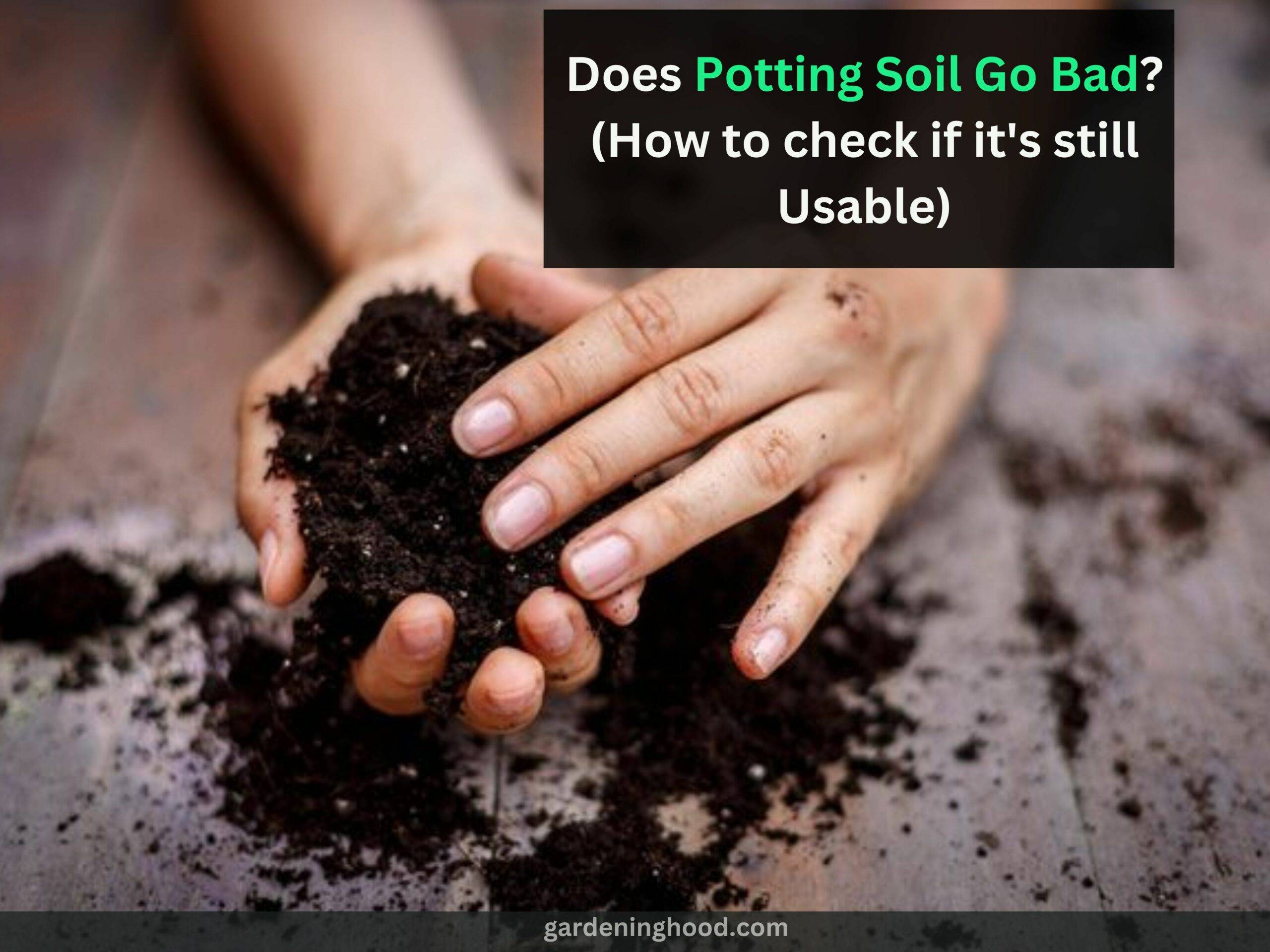Sawdust as Mulch: 14+ Uses of Sawdust in Garden
Who wouldn’t want to use an item that is cheap and easy to get? I think everyone would like this idea because all of you want to use the best supplies that will help the vegetable or fruit to produce maximum yield.
Here, I am talking about using sawdust as mulch. Not everyone can use sawdust as mulch, especially when you are a beginner. Don’t worry; I have shortened your work by explaining how you can effectively use sawdust in the garden.
From my experience, I can say that using sawdust in the garden is easy and comparatively less costly than other mulches. But to use it, you need to take care of a few points that I have covered below. So let’s learn together and get some information about the usage of sawdust in the garden.
About Sawdust:
You can’t add any sawdust to your home garden as not every sawdust suits it and causes bad effects. For example, wood that already contains substances like yews, Taxus spp, etc., and also a particle board or cut-up wood pallets.
Remember not to dispose of the wood in forests or waysides rather you should safely and legally contaminate the sawdust and wood chips.

As an alternative, you can use fresh or dry wood shaving from wood as a sawdust i.e. oak, maple, ash, fir, cedar, cherry, and common fruit trees. If you want to use sawdust for weed killer then I will suggest you use black walnuts. Next, you need to use sawdust in the garden as I have explained below.
14+ Uses of Sawdust in Garden
Sawdust is an excellent gardening resource that you can easily get from the mining industry, woodworking, and hobby crafts. It’s actually very cheap to buy.
Before using it in the garden you should know that using it sometimes can have a bad effect on plants so before buying and using it you should know the proper use and management. The following are some different ways by which you can use sawdust in the garden.
- Mulching
- Garden Paths and Walkways
- Weed Control
- Compost
- Soil Amendment
- Enhancing Growth of Beneficial Mycelium
- Boost Orchard Fruit and Berry yields
- Feed Acid-Loving Plants
- As Growing Substrate
- Crop and Bulb Storage
- Sop up Spills
- Slug Control
Mulching
- Using sawdust as organic mulch make sure to use only the plant-safe sawdust not the sawdust from black walnut trees.
- The sawdust from the black walnut trees is actually a natural toxin that kills the plant and prevents the growth of the plant.
- I will suggest that if you are using sawdust mulch, always avoid sawdust that is treated from woods of any kind.
- To prevent the small weeds or grass from growing you need to first line the area with the plant of newspaper or cardboard that is needed to be mulched.
- For use as mulch, you need to spread it in layers of 3 to 4 inches deep. Doing this will help keep the sawdust from the base of plants, trees, or bushes.
- For selecting the wood for sawdust you can select either soft or hard wood. The best you can use is the mix of two.
- To maintain the effectiveness of the mulch you can add fresh sawdust every year at the top.
- For moisture control, you need to refresh the payer of the sawdust.

Line Garden Paths and Walkways With Sawdust:
- You can use the sawdust for building a new garden path.
- First, you need to dig down and clean the garden by removing grasses and plants so that after applying sawdust they don’t grow through it.
- You can leave the place as it is in case you are not sure about striping the area of topsoil.
- Make sure to fill the holes in a walkway and level it equally.
- The other way to add sawdust is by lining the walkway with the help of weed-blocking material by using landscape fabric, layers of newspaper, or cardboard.
- Layer a weed block layer to prevent the growth of weeds in the new pathway.
- The sawdust is used to compact as time passes and is decomposed so you need to line the path with at least 2 inches of sawdust. Adding more layers will help in maintaining the pathway.
- Every year you should top the pathway with fresh sawdust doing this will help to benefit from a fresh layer
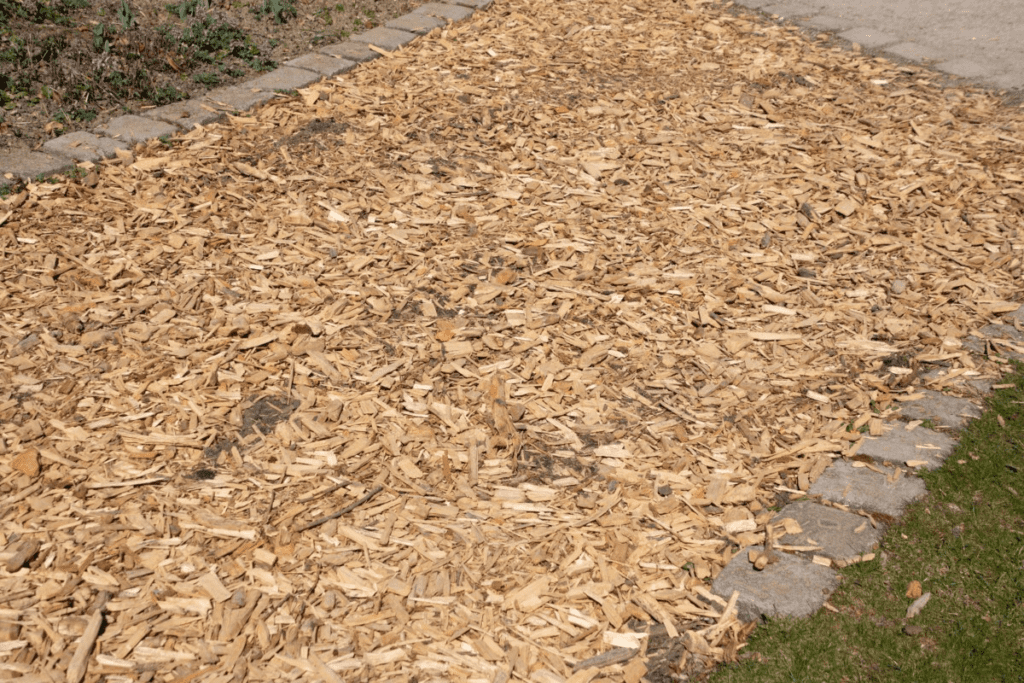
Sawdust As Natural Weed Control:
- Sawdust can be used for killing weeds in places like cracks, between rocks in pathways, yards, and gardens but before using it you need to make sure the plants are not in that area as it can kill them.
- Using walnut sawdust will be perfect for killing weed.
- In case it is used for a larger area you need to broadcast the sawdust one or two inches deep.
- There is an active compound found in walnut sawdust called juglone that breaks down with the passing of time and controls the growth of weed. In case of adding more sawdust after a year, you can reapply the sawdust in the same way.
- The juglone is susceptible to some plants but plants like tomatoes, eggplant, potatoes, peppers, cabbages, and several herbaceous perennials are way sensitive to the juglone compound.
- The members of the squash family, stone fruit trees, and the common garden vegetables can tolerate it easily.
- In the beginning, you will get confused about whether to spend money on sawdust and apply it for weed control as it takes time to get the result effective but I will suggest you to spend a little money to buy sawdust is worth it.
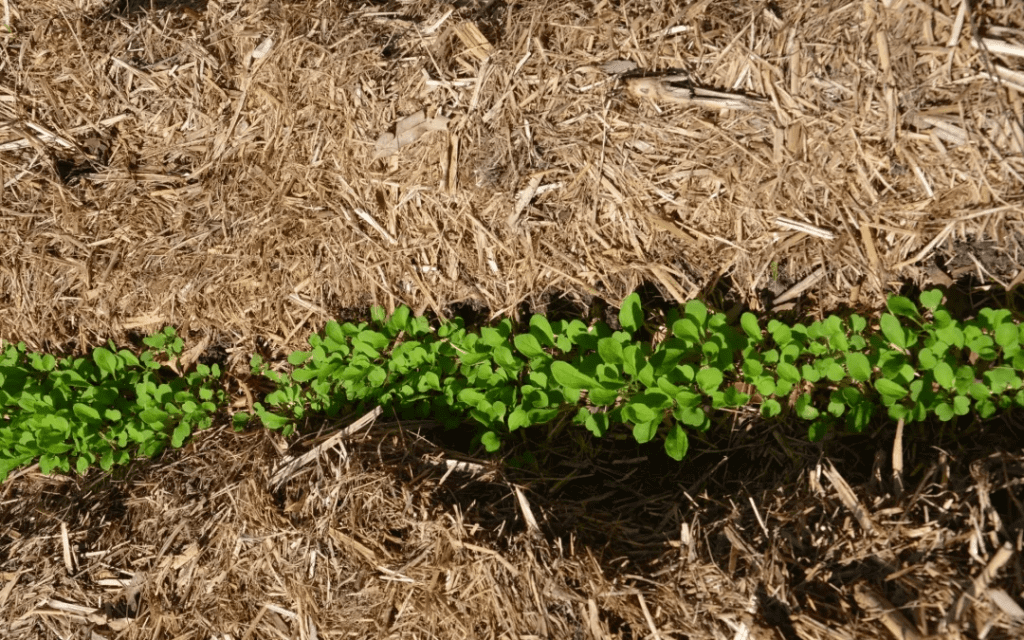
Build Compost Pile With Sawdust:
- Sawdust is a good food source for microorganisms as it contains carbon and carbohydrate which is why sawdust is known as Brown compost material.
- You can use these two materials for building a compost pile by alternating the layer with Brown and green material and creating the best environment for decomposition.
- You can also use the compost material such as grass clippings, manure, vegetative, or food waste for layering the composting.
- One more way of using the sawdust is using it as a part of Brown material needs.
- The perfect rate of using sawdust is 4:1. For example you need to use 4 inches of sawdust in every one inch of green material.
- When you find the sawdust is looking like soil and has turned its color black it indicates that the compost is ready to use.
- Once you use the sawdust from green material it does absorb the juices quickly so for that you need to speed up the transition of the pile and make the compost usable.
- In case to speed up the decomposition process, you can add water to the pile frequently which will help in breaking down the compost pile quicker
- The other way to speed up the decomposition process is by adding fertilizer or fish emulsion as they contain nitrogen.

Sawdust as a Soil Amendment:
- You can use sawdust as a soil amendment that is best for applying to garden beds from 4 to 6 months. This will allow the soil to decompose by not stripping the nitrogen from the soil and the plants will easily grow there.
- The other option is to add Sawdust to garden beds in small amounts regularly so that decomposition is done by using nitrogen and leaving behind the nitrogen that is needed for the plants.
- In the growing season, you need to add a larger amount of sawdust before and with sawdust mix the nitrogen source.
- You can also mix Composted manure, leaf mold, compost, or peat moss.
- For covering large areas you should spread 2 to 3 inches of sawdust to the entire surface.
- Make sure to mix the sawdust with soil evenly going down upto 6 to 7 inches.

Enhancing Growth of Mycelium and Beneficial Mycorrhizae:
- To increase the surface area of roots you can serve in the garden and garden soil the Mycorrhizal fungi and mycelium.
- This will allow the plants, trees, and shrubs to get water and all the essential nutrients through it.
- Mycorrhizal fungi and mycelium do enhance plant growth and increase production.
- Using sawdust helps in building essential fungi naturally.
- If we compare the Mycorrhizal fungi and mycelium that are purchased and those that are naturally grown are better because they do grow relative to the growing environment, have a higher growth rate, and are for longer term.
- Using Sawdust for increasing beneficial Mycorrhizal fungi and mycelium in the soil is very simple using sawdust with compost and applying it to the areas where you don’t need it.
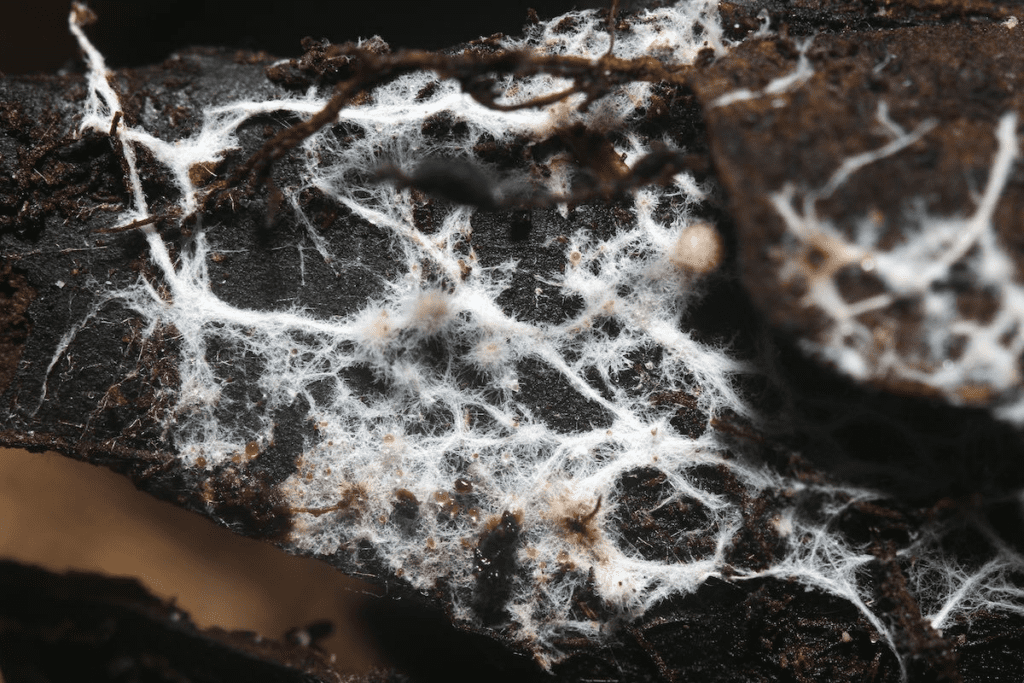
Using Sawdust for Boosting Orchard Fruit and Berry Yields:
- You can use sawdust to boost orchid fruit and berry yields.
- For growing them you need to provide them with a good environment so that they grow healthy.
- For growing orchids at home, often clean the areas around the plant.
- The leaves that have fallen from them make sure to clean away but the tree does depend on these tiny fungi to get large amounts of nutrients and hydration.
- In the case of planting an orchard but the plant is not able to grow fruit then it’s a symbol of the lack of mycorrhizae and mycelium so by using sawdust you can easily solve the problem.

Feed Acid-Loving Plants With Sawdust
- Applying sawdust frequently in acid-loving plants does help in keeping the acidity levels of soils higher.
- It does help in enhancing the growth and production of plants such as strawberries, evergreens and conifers, blueberries, rhododendrons, azaleas, and holly.
- The way of applying sawdust is used as mulching top dress and mixing a few inches into the soil.
- Doing this will increase the soil acidity and do remember not to use compost as the acid released from sawdust during decomposition is done quickly by breaking the cellulose of the sawdust.

Sawdust as a growing substrate:
- Using this sawdust as a growing substrate does help to grow plants even with having little or no actual garden space for growing.
- You can use them as growing substrates for growing potatoes or tomatoes, also you can use them for growing mushrooms.

Grow Mushrooms in Sawdust:
- Using sawdust to grow mushrooms you need to first buy spawn from a good source.
- Use sawdust to destroy the infection from any unwanted spores and pathogens.
- For pasteurizing sawdust, you have to put a large tote or pail after that, cover it with boiling water, and keep the sawdust in the water for a maximum of 2 hours.
- Before using the sawdust, make it to drain and cool it down.
- For growing the mushroom you can make yourself the substrate by mixing sawdust and compost by using 75% sawdust and 25% compost or you can also use 75% sawdust, 25% straw, and 1% chalk.
- After making the substrate mix the spore equally and properly into the substrate.
- In the next step, you need to place the mixture into a clear plastic bag and seal or knot the bag.
- After noticing the growth of the spawn the bag will look like a webby, string-like weaving.
- You need to maintain the moisture of the soil by adding water to it and make sure to keep the bag at room temperature.
- In case of light requirement by the mushroom is light but you need to provide them regular light for some hours does help the plants to grow speedily and helps increase fruiting.
- During the process, you need to maintain good and even moisture in the whole growing process.
- The right time for harvesting the mushrooms is when they grow to adequate size.

Grow Tomatoes in Sawdust:
- For growing tomatoes in sawdust, you need to use a five-gallon pail, whiskey barrel planter, or similarly-sized container.
- To start you need to dill the soil for approximately half-inch drain holes.
- Now take a bucket and fill in about 85% with sawdust and leave the lip as it is for watering.
- Next, you need to plant the tomatoes in a container consisting of soil and make the plant sink into the sawdust for about one-half inch.
- After planting it you need to fertilize the tomatoes and water well and I will suggest you use water-soluble fertilizer.
- Make to fertilize the tomato wheeling and in case they are looking yellow you need to supply high nitrogen fertilizer.
- To prevent the tomatoes from blossoming end rot you can add calcium every two weeks. You can also mix crushed eggshells in the soil as they are rich in providing natural calcium or you can also mix lime or yogurt in water.
- In case the plant is about 10 to 12 inches high you need to stake the tomatoes or you can provide a wire cage for supporting the growth.

Grow Potatoes in Sawdust:
- Using sawdust to grow potatoes you need to use a large container such as a large trash can, five-gallon plastic pails, large tote, barrel, or half-barrel.
- Before planting potatoes you need to make one-half-inch drainage holes but need about 6 inches.
- Then make a layer of fine mesh screen.
- In the case of larger containers, you need to put about six inches of soil in the bottom, and for smaller containers, you need to put about three to four inches.
- At last, you need to layer 4 inches of sawdust on the top of the soil.
- Now you need to push seed potatoes into the sawdust top.
- While seeding keep the space between the potatoes about 6 inches apart.
- After seeding make sure all the potatoes are covered properly.
- Next, you need to water the plant.
- You can add sawdust after every few inches of potato growth unless you see the tops of the leaves.
- Keep it repeating unless there is no space or the container is full.
- Leave some space for watering.
- Now you need to maintain the plant by scheduling to water them.
- Don’t let your plant dry out but don’t make the soil soggy and avoid Overwatering.
- Finding the symptoms of leaving falling, dry, turning brown plant tops then it’s the time to harvest potatoes.
- The harvesting is done simply by dumping out the potatoes in the container.
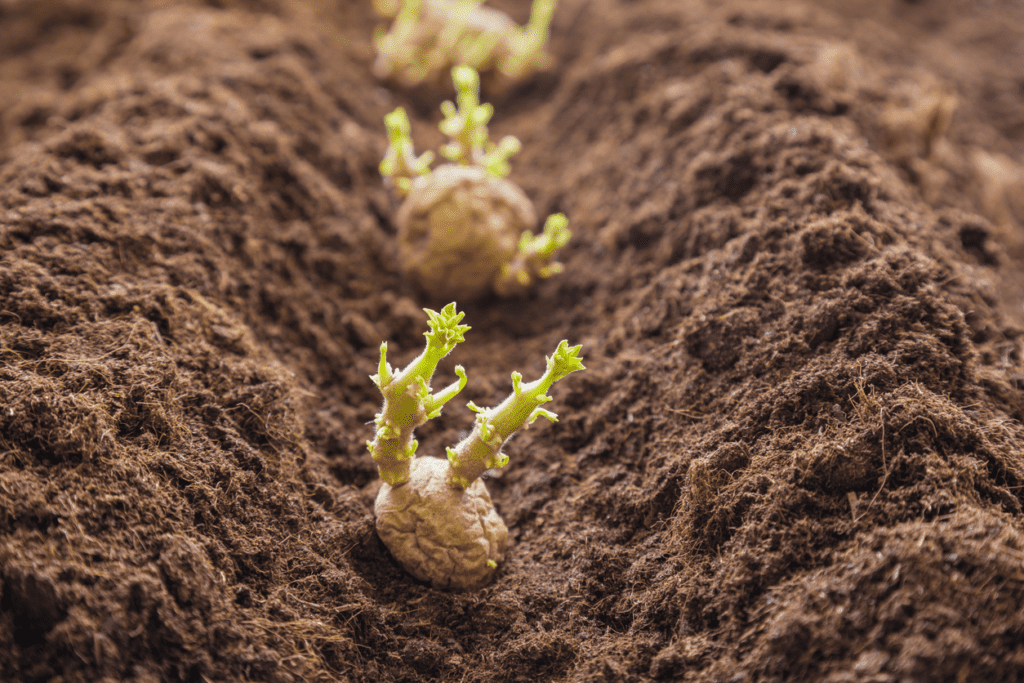
Store Root Crops and Bulbs in Sawdust:
- You can use sawdust to store crops and bulbs.
- For that, you need to put a light layer of sawdust at the bottom of the container. Using a wooden orchard will be the best option for you.
- Make sure to cover the cracks to avoid building up condensation.
- In case the container looks damp then you need to leave the cover off.
- Now it’s time for laying the root crops that too in a single layer on the layer of sawdust.
- Avoid touching them individually so that the spreading of mold or rot doesn’t happen.
- Now cover the layer with sawdust again.
- The process of layering vegetables and sawdust needs to be repeated until the container is full.
Store bulbs and tubers in sawdust:
- First, you need to dig, clean, and spray the tubers and bulbs.
- Make them sit for a maximum of 3 days so that it dries out and always make sure the tuber and bulb exterior is dry out completely.
- Make them store in an area where the bulbs and tubers are not frozen so the perfect temperature is of 50 degrees Or less than it.
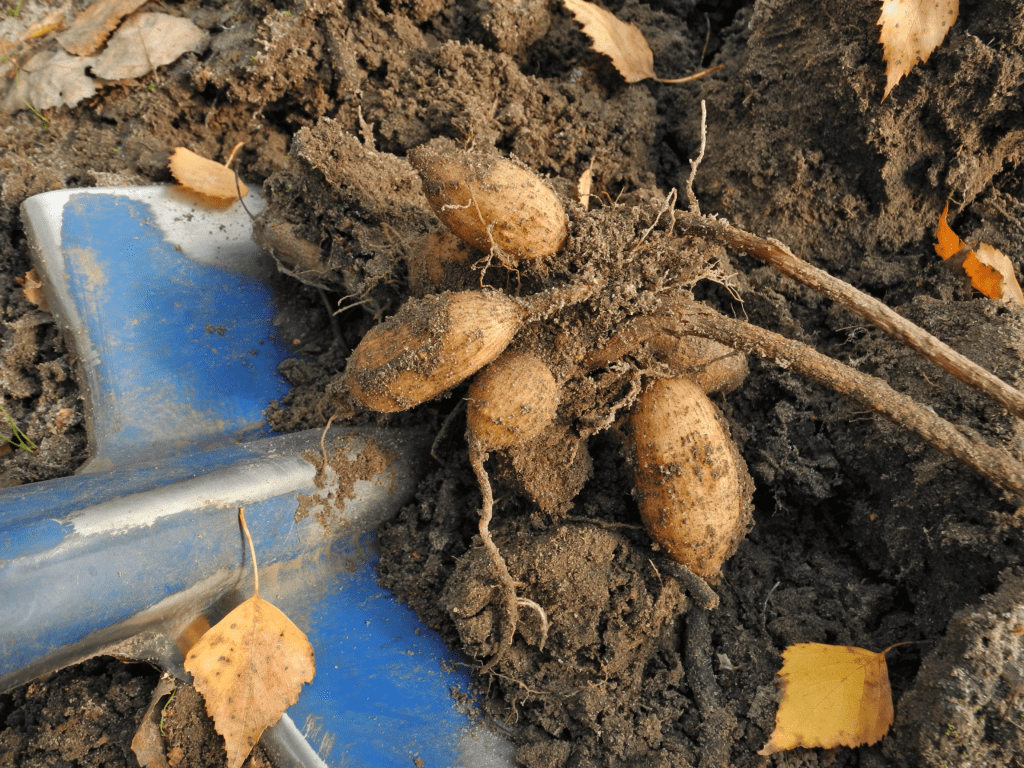
Use Sawdust to Sop up Spills:
- Did you know sawdust is good at absorbing spills and extra or unwanted liquid? So you can use the sawdust to stop any leak from lawn or garden tools, for example, a lawnmower, rototiller, or garden tractor.
- Tout can use the sawdust to clean the spills by sprinkling a layer of sawdust with water. And make it absorb the spills by keeping it as it is for about 15 minutes.
- After that, clean the sawdust and dispose of it.
- In case you have slugs and snails on your plants you can use sawdust.
- For that, you need to surround the sawdust at the base of plants 3 inches deep.
- Make sure not to put the leaves of the plant.

Conclusion:
I will suggest you find a nearby place for a local mill or landscape company that deals with raw, untreated wood so that you easily get the sawdust. Before buying it ask them what kind of wood it is so that there is no risk after using it. Do wear the mask during the whole process of using sawdust. I hope you get to know about the different uses of sawdust.

